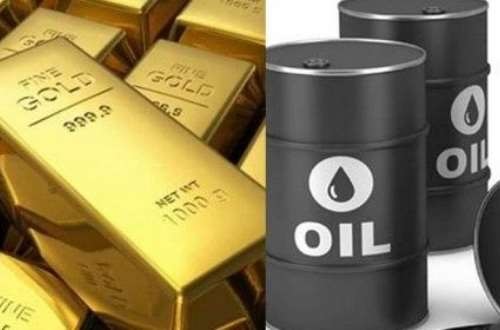There has been recent allegations of losses and accusations of impropriety regarding the novel gold for oil program started by the previous government with the Bank of Ghana and the Minerals Income Investment Fund (MIIF) at the centre of the accusations from some sources.
The MIIF in the past three years has grown to be arguably the most profitable state-owned organisation and perhaps the most impactful, recording over 100% in profits in 2023, increased its assets under management from US$180 Million in 2021 to circa US$1 Billion in 2024, supporting mining capacity building and increasing Ghana’s equity interests in mining.
Ghana Extractives which have been following the activities of MIIF considering its importance to the mineral sector in Ghana has researched and followed the company’s gold trade program including previous engagements with MIIF at different fora such as the October 2024 stakeholder conference and subsequent press conference on the activities of the Fund.
The Objective of the MIIF Gold Trade Desk
MIIF whose investment policy guidelines allows it to trade in precious minerals as an alternative investment according to the presser in 2024, aims to use the Trade Desk to improve the integration of the gold value chain including the proposed gold backed ETF (Exchange Traded Fund) , supporting the stabilisation of the cedi, build gold reserves, optimise returns for the Fund and supporting the formalisation of the small scale mining sector.
USD$1.02 billion Dollars Revenue
MIIF gold trade through a revolving trade line of the cedi equivalent of US$30m to its approved aggregator was able to attract circa US$600 million dollars into the Ghanaian economy between October 2023 and September 2024 with other trade lines leading to revenue in excess of US$ 1.0 Billion.
The MIIF Trade Model
Our research reveals that MIIF through licenced aggregators and under an insured program provides cedis to a licenced aggregator to purchase gold from licenced small-scale miners which is then exported to accredited LBMA (London Bullion Market Association) refineries. According to same research, MIIF has two models covering its trade program – the Gold for Forex and Gold for Oil.
The MIIF Gold for Forex Program
The objective of this model was for MIIF to make margins on the USD with the added impact of supporting the cedi against volatility. Contrary to allegations of missing US$90 Million cash, our investigations reveal that MIIF in 2023 disbursed the cedi equivalent of $30m in 3 tranches of $10m each to its first aggregator Goldridge, which according to sources remains the only MIIF owned capital outlay. This monthly revolving outlay returned a monthly average of circa $60 Million over a period of eleven months.
Based on the success of the program, banks such as Fidelity approached MIIF with its own capital under a pre-settlement arrangement. With this arrangement, the bank provides its own capital to plug into the MIIF trade with the objective of off taking dollars derived from the trade. According to sources, there was a return of circa US$156 Million between June to September 2024.
The Gold for Oil
MIIF participation in Government of Ghana’s Gold for Oil did not involve any capital outlay from MIIF. This second model of the MIIF Trade involved oil bulk distribution companies (BDCs) providing cedis to MIIF’s Trade Desk through the Chamber of Bulk Oil Distributor (CBOD). This generated forex of circa US$650 Million to support the payment of fuel supplies on behalf of BDCs between February 2024 to September 2024. The forex delivered to the oil import market was however sub-Bloomberg mid-rate, thereby bringing stability to the cedi and supporting the purchase of oil prices at the pump as confirmed by the Chamber of Bulk Oil Distributors.
Forex Variance in September 2024
According to the MIIF press conference last year which has been much amplified recently, these fiscal gains however caused forex variances which affected MIIF’s trade portfolio as local gold prices soared against lower Bank of Ghana prescribed rates for trading and the prevailing USD commercial rates at the time.
This created a forex variance of US$19.5m out of circa US$156m trade volume of Fidelity Bank’s capital with MIIF, and US$42m out of the $650m trade volume with the BDCs under the Gold for Oil Program. According to reports, the US$19.5m Fidelity variance has been fully remedied and circa US$29 million out of the BDC reported variance of US$42 million remedied through trade receipts.
According to reports, MIIF’s revolving initial capital of $30m provided to Goldridge in cedis was suspended in September 2024 due to the reported forex variance borne out of the prevailing commercial forex rate and the prescribed sub Bloomberg rate from Bank of Ghana.
It is estimated that, a further trading by Goldridge under the revolver can generate more than US$500 million per year. It is instructive to note that, the MIIF gold trade is still ongoing with an expanded number of aggregators and with a projected foreign exchange inflow of US$ 3 Billion dollars in the next two years.
Trade, the future and proposed Ghana Gold Board
MIIF’s Trade has been hugely successful despite the forex variance in September 2024. It is however estimated that, following the turnover of US$30 million to generate over US$600 million, the trade structure provides an opportunity for Ghana to utilise such for the much-needed forex, the attendant formalisation impact on the small-scale mining sector and the economy as a whole.
The MIIF Trade Desk provides a blueprint for future trading programs whether gold for oil or trading by the Government under Ghana’s proposed gold board. The risk of foreign exchange variances are commonplace with commodity trading but with the right monitoring, technology and hedging mechanisms a precious minerals trade program can be Ghana’s game changer and MIIF has shown the way.
Source: Ghana Extractives


